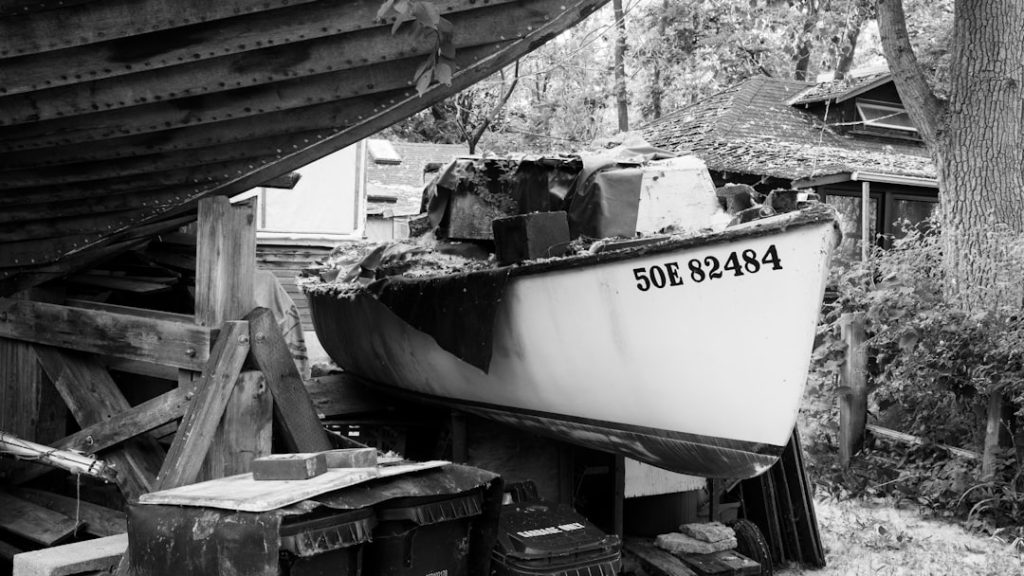Outboard motors are essential for powering boats, providing propulsion and steering capabilities. They come in various types, each designed to meet specific needs and preferences of boaters. The primary classifications of outboard motors include two-stroke and four-stroke engines.
Two-stroke outboards are known for their simplicity and lightweight design, making them ideal for smaller boats and applications where weight is a critical factor. These engines operate on a straightforward cycle, allowing for a higher power-to-weight ratio, which is particularly advantageous for speed enthusiasts. However, they tend to be less fuel-efficient and produce more emissions compared to their four-stroke counterparts.
On the other hand, four-stroke outboard motors have gained popularity due to their efficiency and environmental friendliness. These engines operate on a more complex cycle, which allows for better fuel combustion and reduced emissions. Four-stroke motors are generally heavier and more expensive than two-stroke models, but they offer superior fuel economy and quieter operation.
Additionally, they require less frequent maintenance, making them a preferred choice for recreational boaters who prioritize reliability and long-term performance. Understanding these distinctions is crucial for anyone looking to purchase an outboard motor, as it directly impacts the boating experience and operational costs.
Key Takeaways
- Different types of outboard motors vary in power, size, and fuel type, affecting performance and suitability.
- Key factors when choosing a used motor include engine condition, hours of use, and maintenance history.
- Quality used outboard motors can be found through dealers, online marketplaces, and boating forums.
- Proper maintenance is crucial to extend the life and reliability of a used outboard motor.
- Inspecting the motor thoroughly and testing it before purchase helps avoid costly repairs and ensures functionality.
Factors to Consider When Choosing a Used Outboard Motor
When selecting a used outboard motor, several factors come into play that can significantly influence the decision-making process. One of the most critical considerations is the motor’s horsepower, which should align with the size and weight of the boat it will be powering. A motor that is too powerful can lead to instability and control issues, while one that is underpowered may struggle to perform adequately in various conditions.
Therefore, it is essential to consult the boat manufacturer’s specifications to determine the appropriate horsepower range for optimal performance. Another vital aspect to consider is the motor’s age and usage history. Outboard motors that have been well-maintained and used sparingly are likely to offer better reliability than those that have seen extensive use or neglect.
It is advisable to inquire about the motor’s service history, including any repairs or replacements that have been made. Additionally, understanding how the previous owner used the motor—whether for leisurely cruising or high-performance activities—can provide insights into its condition and potential longevity. This information can help buyers make informed decisions and avoid costly repairs down the line.
Where to Find Quality Used Outboard Motors

Finding quality used outboard motors requires a strategic approach, as not all sources offer the same level of reliability or selection. One of the most common places to start is through local marine dealerships that specialize in used equipment. These dealerships often have a reputation to uphold and may provide warranties or guarantees on their products, giving buyers added peace of mind.
Additionally, they typically have knowledgeable staff who can assist in matching a motor to specific boating needs. Online marketplaces have also become increasingly popular for purchasing used outboard motors. Websites such as Craigslist, eBay, and specialized boating forums allow users to browse a wide range of options from private sellers.
However, while these platforms can offer competitive prices, they also come with risks such as misrepresentation of the motor’s condition or lack of recourse if issues arise post-purchase. Therefore, it is crucial to conduct thorough research and possibly arrange for an inspection before finalizing any online transaction. Networking within local boating communities can also yield valuable leads on available motors that may not be widely advertised.
The Importance of Proper Maintenance for Used Outboard Motors
| Maintenance Aspect | Metric | Impact on Performance | Recommended Frequency |
|---|---|---|---|
| Oil Change | Engine oil viscosity and cleanliness | Ensures smooth engine operation and prevents wear | Every 50 hours or annually |
| Fuel System Check | Fuel filter condition and fuel line integrity | Prevents clogging and fuel delivery issues | Every 100 hours or annually |
| Propeller Inspection | Propeller damage and alignment | Maintains efficient thrust and reduces vibration | Before each use |
| Cooling System Flush | Water pump impeller condition and coolant flow | Prevents overheating and engine damage | Annually or every 100 hours |
| Battery Maintenance | Battery charge level and terminal cleanliness | Ensures reliable engine starting | Monthly |
| Corrosion Prevention | Condition of anodes and protective coatings | Extends motor lifespan and prevents rust | Every 6 months |
Proper maintenance is paramount for ensuring the longevity and performance of used outboard motors. Regular upkeep not only enhances reliability but also prevents costly repairs that can arise from neglect. Key maintenance tasks include changing the oil and filters at recommended intervals, inspecting fuel lines for leaks or deterioration, and checking the propeller for damage or wear.
Additionally, flushing the engine with fresh water after each use helps remove salt and debris that can cause corrosion over time, particularly in coastal environments. Another critical aspect of maintenance involves monitoring the electrical system, including the battery and wiring connections. Corroded terminals or weak batteries can lead to starting issues or electrical failures while on the water.
Furthermore, keeping an eye on the cooling system is essential; overheating can cause severe damage to an outboard motor. By adhering to a regular maintenance schedule and addressing minor issues promptly, boaters can significantly extend the life of their used outboard motors and ensure a safer boating experience.
How to Inspect a Used Outboard Motor Before Purchasing
Inspecting a used outboard motor before making a purchase is a crucial step that can save buyers from future headaches. A thorough inspection should begin with a visual examination of the exterior components. Look for signs of corrosion, especially around the lower unit and mounting brackets, as these areas are often exposed to water and can deteriorate over time.
Additionally, check for any cracks or dents in the casing that could indicate previous accidents or mishandling. Moving beyond the surface, it is essential to assess the motor’s operational condition. If possible, request a demonstration where you can observe the motor running.
Pay attention to how smoothly it starts; a well-maintained engine should start easily without excessive cranking. Listen for unusual noises such as knocking or grinding sounds during operation, which could signal internal issues. Furthermore, inspect the propeller for any bends or nicks that could affect performance.
If feasible, consider conducting a compression test to evaluate the engine’s internal health; consistent compression across all cylinders is indicative of a well-functioning motor.
Tips for Negotiating the Price of a Used Outboard Motor

Negotiating the price of a used outboard motor can be an intimidating process for many buyers; however, with the right approach, it can lead to significant savings. One effective strategy is to conduct thorough research on comparable models in similar condition before entering negotiations. This knowledge empowers buyers with data on fair market prices, allowing them to make informed offers based on actual value rather than emotional attachment or seller claims.
When engaging in negotiations, it is beneficial to remain calm and composed while expressing genuine interest in the motor. Start by highlighting any concerns discovered during your inspection; this can provide leverage in discussions about price adjustments. For instance, if you noticed signs of wear or required repairs, use this information to justify a lower offer.
Additionally, be prepared to walk away if negotiations do not meet your expectations; this demonstrates confidence in your research and willingness to explore other options.
The Benefits of Buying a Used Outboard Motor
Purchasing a used outboard motor offers numerous advantages that appeal to both novice and experienced boaters alike. One of the most significant benefits is cost savings; used motors are typically priced much lower than new models, allowing buyers to allocate their budget toward other essential boating equipment or experiences. This financial flexibility can enhance overall enjoyment on the water without compromising quality.
Moreover, buying used often means acquiring a motor with proven reliability and performance history. Many seasoned boaters prefer older models due to their simplicity and ease of repair compared to newer technologies that may require specialized knowledge or tools for maintenance. Additionally, certain vintage outboards have become sought after by collectors and enthusiasts who appreciate their craftsmanship and historical significance.
This trend not only adds value but also fosters a sense of community among those who share a passion for classic boating equipment.
How to Properly Install and Test a Used Outboard Motor
Proper installation of a used outboard motor is critical for ensuring optimal performance and safety on the water. Begin by carefully reading the manufacturer’s installation manual specific to your motor model; this document provides essential guidelines tailored to your engine’s requirements. Before installation, ensure that all necessary tools are on hand, including wrenches, screwdrivers, and any mounting hardware specified in the manual.
Once ready for installation, position the motor on the transom of your boat at the correct height as indicated by manufacturer specifications; improper height can lead to performance issues such as cavitation or poor handling. Securely fasten the motor using appropriate bolts while ensuring that it is aligned correctly with the boat’s centerline for balanced weight distribution. After installation is complete, conduct a thorough test run in a controlled environment before venturing into open waters.
Monitor how well the motor starts and idles; check for any unusual vibrations or noises during operation. Testing under various conditions will help confirm that everything functions as intended before embarking on longer journeys. By following these guidelines throughout each stage of purchasing and maintaining a used outboard motor, boaters can enhance their overall experience on the water while ensuring safety and reliability in their equipment choices.


